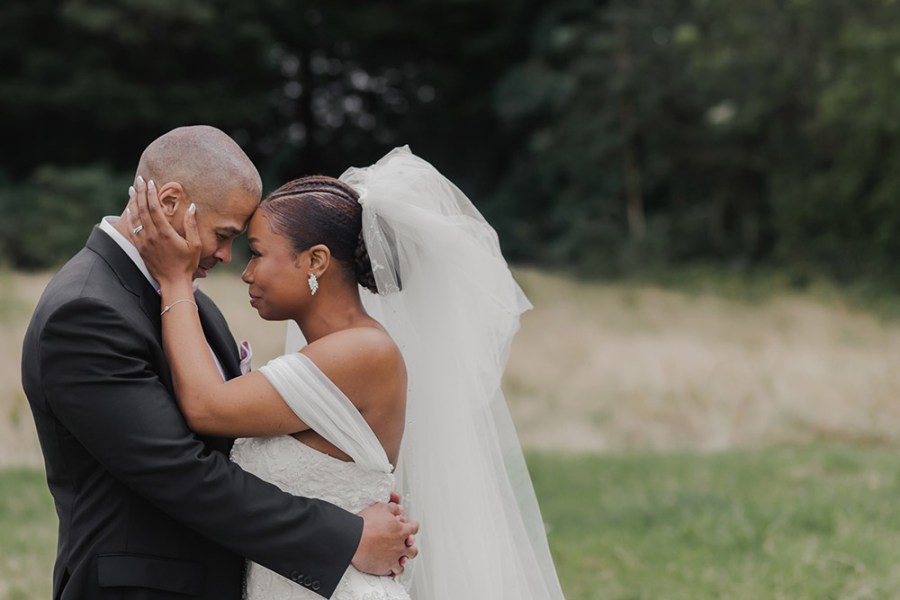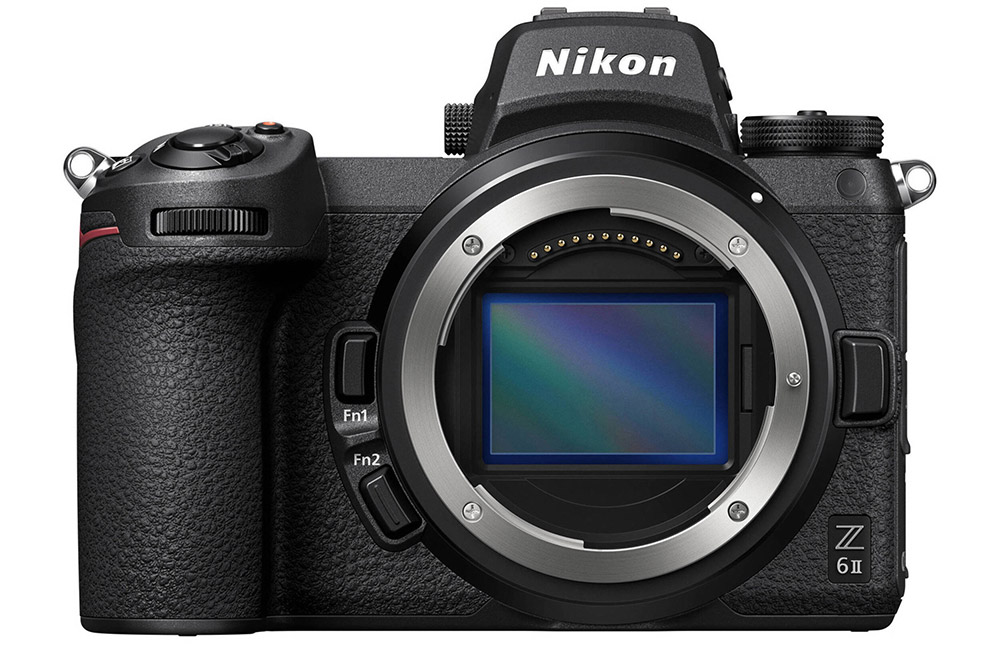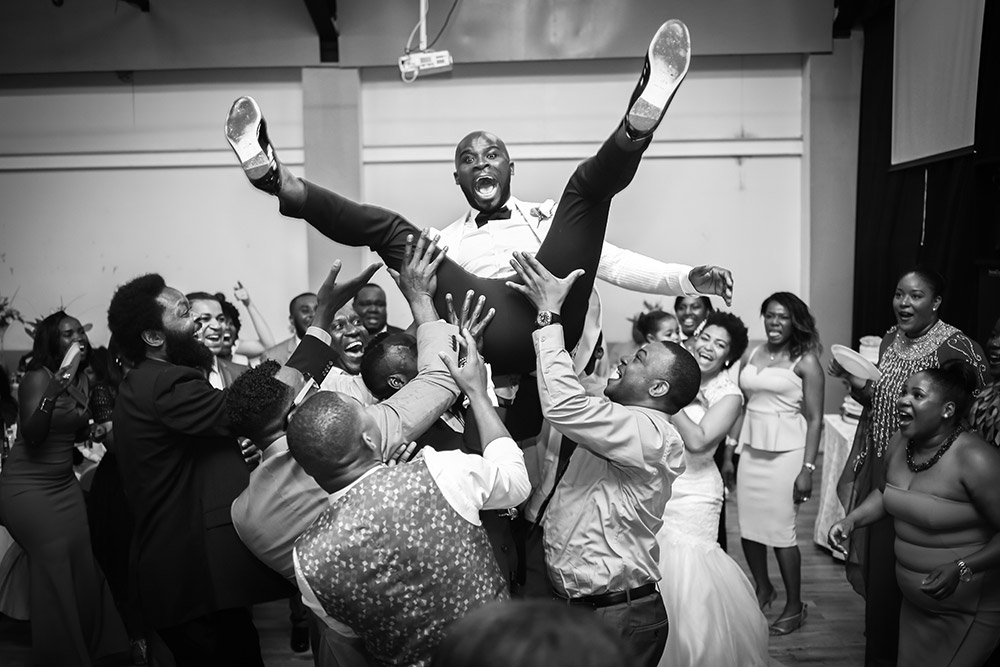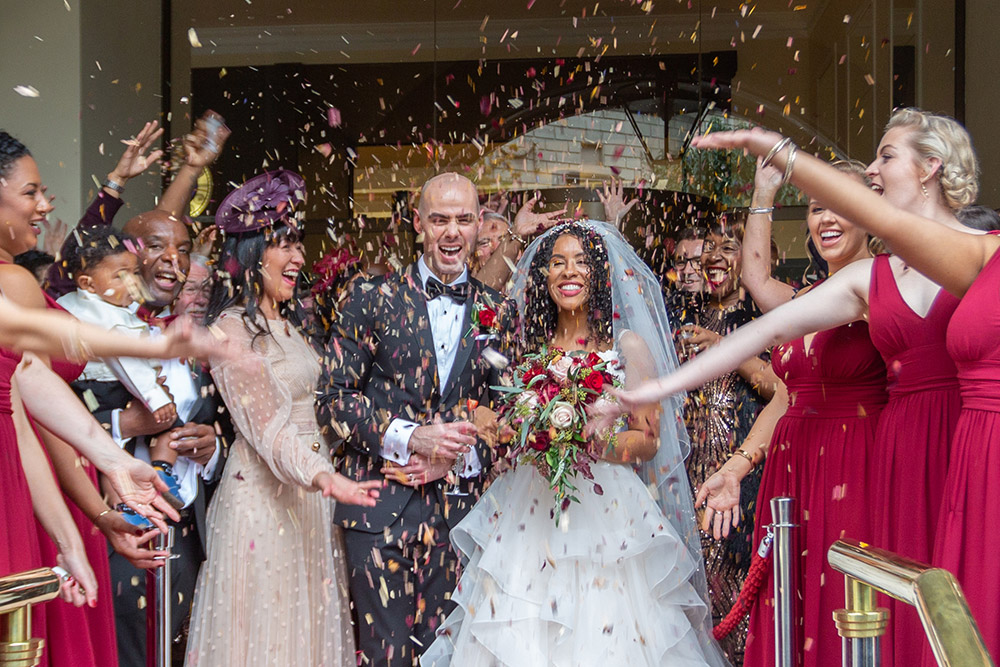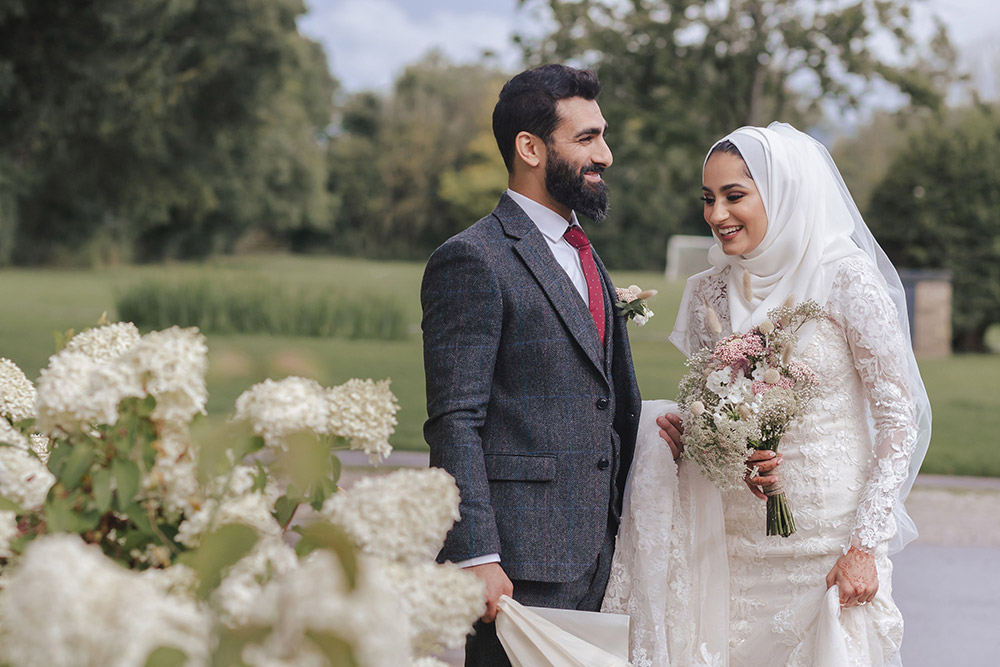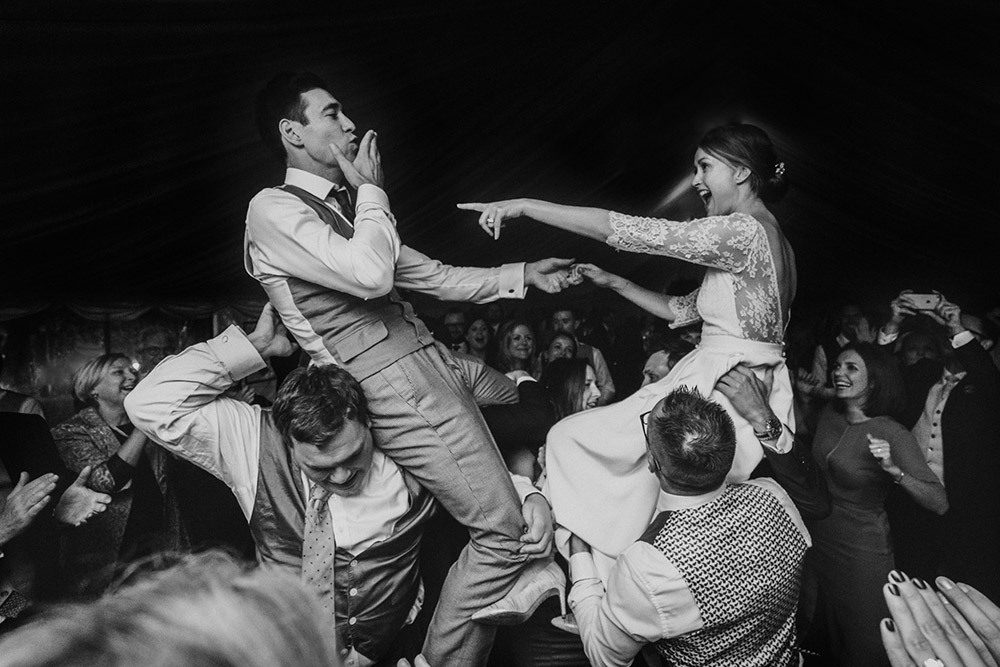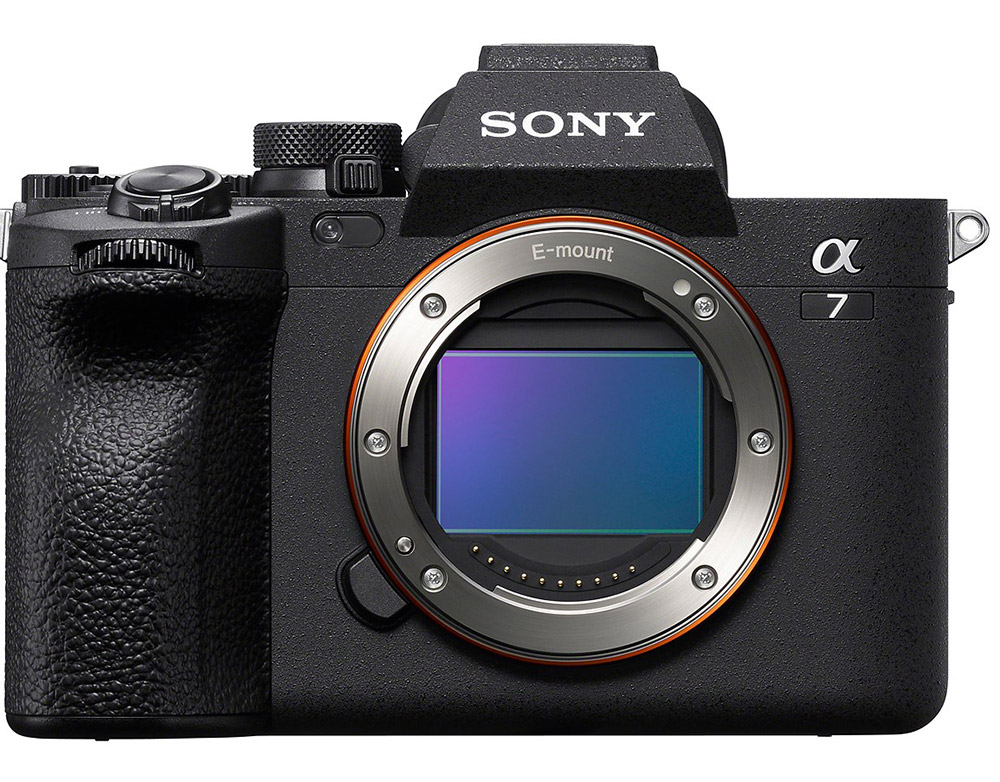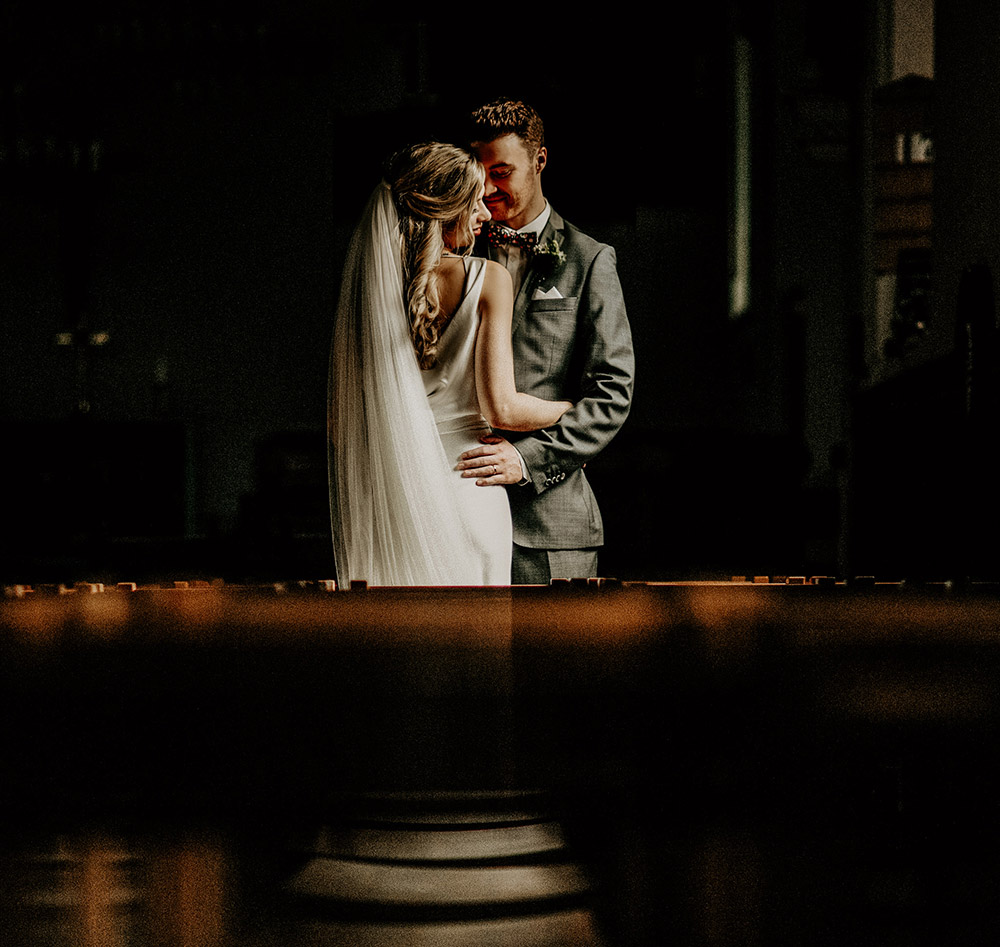Three talented wedding photographers with different styles and approaches share their kit recommendations with Geoff Harris
If you’re thinking of going into wedding photography – or you just want a nosy at what the pros might be using – we speak with Gurvir Johal, Tanya Weekes and Mick Shah about their kit recommendations and what you might find in the typical bag of a wedding photographer. Hint – it’s a lot.
Wedding photography is one of the most varied jobs, photographically, that anyone can do, and as such, you’ll find that the average wedding pro has to be prepared for all kinds of situations. There’s portraits, reportage, low light, macro, close-up, action – and more genres in between that all need to be captured. Even if you equip yourself with one of the best cameras for wedding photography, you’ll find there’s a lot more to think about!
Gurvir Johal

Birmingham-based Gurvir is a specialist in Asian and Indian weddings who is ranked Number 3, World’s Best Wedding Photographer in the One Eyeland International Awards. He’s also an SWPP Fellowship photographer and works closely with the society. See www.gurvirjohal.com, Instagram @gurvir_johal and Twitter @gurvy_johal.
Gurvir, who is internationally recognised for his skill at shooting Asian and Indian weddings, describes himself as a long-time Nikon ‘fanboy’ who now swears by the Z 6II. ‘As well as the invaluable dual memory card slots, the Z 6II is so light and nimble, which is really important for me. Asian and Indian weddings can sometimes be 20 hours long, over one day. Or I can be doing three weddings back to back… So it can be very physically demanding. A bulkier body and lens combination, such as the D3s, would kill my hands.’
Gurvir also cites the camera’s silent focusing, as well as the benefits of Eye-Detection AF generally. ‘The camera focuses so quickly, so I can worry more about the composition and the storytelling – the right angles, right position, and so on. Rather than constantly checking the back of the camera, I sometimes shoot blindly, knowing that the Eye-Detection AF will capture a sharp shot of the
subject’s face.’
Gurvir uses back-button focusing, which he also finds ‘snappier’ on the Z 6II compared to his older Nikon DSLRs. ‘The Z 6II’s AF is like “glue” the way it sticks to subjects. Although, having recently used the newer Z 9 I would say it’s more like superglue! Not that
I am planning to change, however, as the smaller Z 6II is perfect for me. It’s exactly the right size for my bookings.’
So far, Gurvir has only used the Nikon Z 6II to record online tutorials and webinars. ‘My filming skillset is very basic and for me this does the job perfectly. I do know several videographers who love the filming capabilities of the Z 6II, however.’
Lenses and lighting
‘For general wedding coverage, whether it’s a Hindu ceremony on a stage or a Sikh wedding in a temple, I often use my Z series 35mm, 50mm and 85mm prime lenses. These enable me to shoot at f/1.8 or f/2 and easily isolate the main subject, blurring out any distractions or unwanted extra people in the background. You don’t want anybody in the background looking distracted, so these lenses are ideal for that.’

Sharan and Kul. ‘The Taj Mahal is so busy. I bribed security guards to keep people away for three minutes!’ 1/160sec at f 7.1, ISO 200
Gurvir is also renowned for his lighting skills. ‘I do love using my own lighting (continuous and strobes) as I have more control in shaping the final image. ‘I believe light adds depth to the image, and ultimately creates a sense of mood. Lighting is ultimately the main difference between a good image and a great one.’
He guides brides and grooms into poses with simple directional cues. Having already built strong relationships with all of his clients, they are already comfortable with being photographed.
‘I’m a Light & Motion ambassador and I use the company’s Clx10 continuous lights and more recently, the new Reflex S. Both are so small and powerful and fit well in my camera bag. I often couple them with a softbox, too.’
When it comes to editing, Gurvir does most of the work in Lightroom using his own custom-made presets for his style. ‘I only use Photoshop to refine the images further to create “fine-art” images or for skin retouching.
‘You can check out some online tutorials, which show you my editing and retouching work on my website by going to www.gurvirjohal.com/store.’
Gurvir’s top tips
- You need to be spontaneous and prepared – I often have two cameras on me with different lenses so I can get different perspectives. This also enables me to work in a more unobtrusive way.
- If you want the bride’s eyes to always be in the centre, a good tip is to get her to look at the end of her nose and then back straight up. Sometimes brides can look too much to the left or right and there is too much white.
- Don’t oversharpen. I see a lot of this recently and it can cause halos around subjects (which can be removed in Photoshop). I always sharpen an image at the last stage, prior to printing.
Tanya Weekes
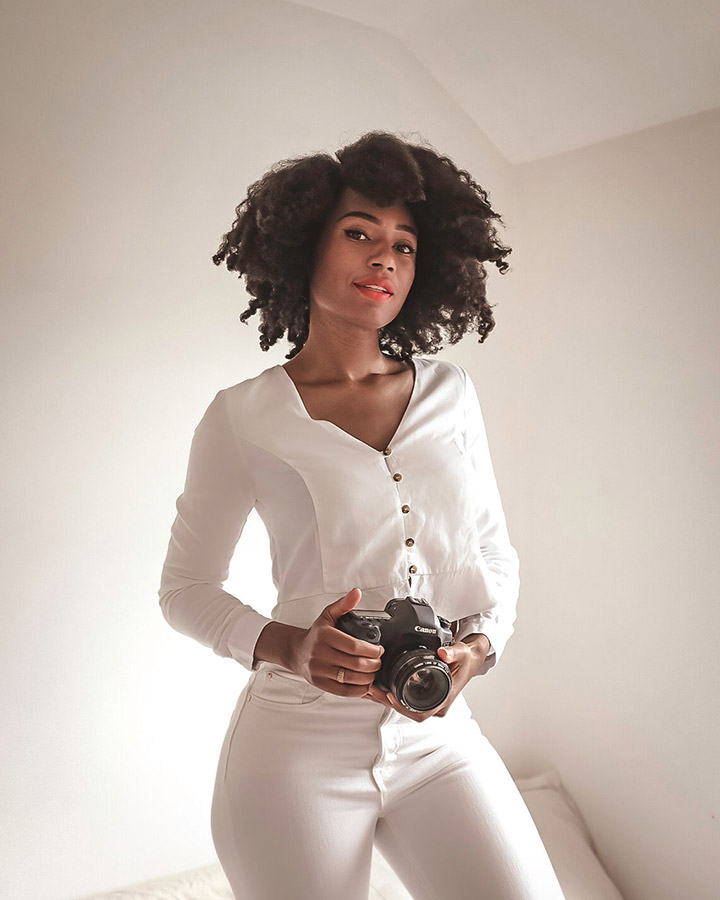
Tanya Weekes is a highly successful portrait, wedding and lifestyle photographer, currently based in Manchester. In addition to weddings, which takes her all over the world, Tanya also works on a wide variety of portrait and lifestyle shoots. See www.tanyaweekes.com, Instagram @tanyaweekes and Twitter @tanyaweekes. She is also an active member of the UKBFTOG community.
As with many successful wedding photographers, it wasn’t Tanya Weekes’ first career choice. ‘I used to work in fashion buying,’ she explains. ‘One year, whilst lying on a beach in Spain and contemplating the thought of going back to work, I decided that it was time to try something else. With the extra time on my hands, I had time to pursue my curiosities, one of which was photography. After being asked to photograph an event and being paid, I decided that maybe this could be my new job.’
After using the Canon EOS 5D Mark III for weddings for several years, Tanya now favours the Canon R6. ‘For me, the main benefit of a mirrorless camera is the electronic viewfinder. You’re able to look through the viewfinder and see what the image will look like before you take the shot as well as instantly see the results of any adjustments to shutter speed, aperture and ISO you might make.
The viewfinder means that there is less time looking at the back of the camera to check how your picture turned out (and potentially missing shots) and in theory a reduction in the amount of editing adjustments you might have to make afterwards. The touchscreen focusing is also something new for me which I am still getting used to, and then there is the beneficial eye tracking.’
Tanya still makes use of her DSLR lenses via an adapter. ‘My Sigma Art 24mm lens is my go-to for big group shots and wide shots of the reception or ceremony room, because it gives me the width I need. I also use the Sigma Art 35mm F1.4 for preparation shots as it’s a great story-telling lens. I like to make use of it for portraits and smaller group shots too where I don’t need as much width.
My favourite lens is actually the Canon 85mm F1.8; when I come across a picture at the editing stage that I’m really happy with, it’s usually taken on the 85mm. It does a great job at creating those blurry backgrounds that clients love, so I like to use it for bride and groom portraits and capturing reactions during the speeches and also sometimes during the ceremony. Another go-to lens is the Canon 100mm F2.8 which is a macro lens – so it’s perfect for capturing details like the rings.’
Tanya has a style that is both relaxed and informal – it’s been described as ‘light and airy’. She prefers to make the most of natural light, but will also use bounced on-camera flash at wedding receptions with artificial light.
The editing process
‘I use Lightroom to edit my pictures but I don’t use presets or filters because every wedding is different,’ Tanya explains. ‘However, there are some similar things I do to all of my images – for example crushing the blacks and muting the greens and taking out some of the blue, but again, it depends on the wedding, I like to keep the colours looking as natural and true to life as possible, since the client has spent of lot of time and money choosing those colours. I want my editing process to fit it into a specific aesthetic, which is different for each wedding.’
Tanya is also keen to record more video and again, the R6 is perfectly suited for this. ‘In theory it would be good to film a little bit during the bride and groom portraits, although sometimes when you’re in “stills mode” it’s not as easy to remember to take a bit of video footage whilst I’m in the moment.’
Tanya’s top tips
- Practice. Work hard on understanding what makes a great image by studying the images you really like, and think about how to focus on these elements when taking your own images.
- I am a big fan of Instagram and prefer it to Facebook. Whatever style of wedding photography you are into, you can easily search for that type. You can learn a lot from looking at photographs you like in terms of composition, lighting, posing etc.
- There is no excuse not to have a collection of your best images readily available as most of us now have smartphones. My tip would be to create an album of your best images and save it in the photos section of your phone so that if you’re having a conversation about your work or what you do as a job, you can quickly pull out your phone and show your work.
Mick Shah
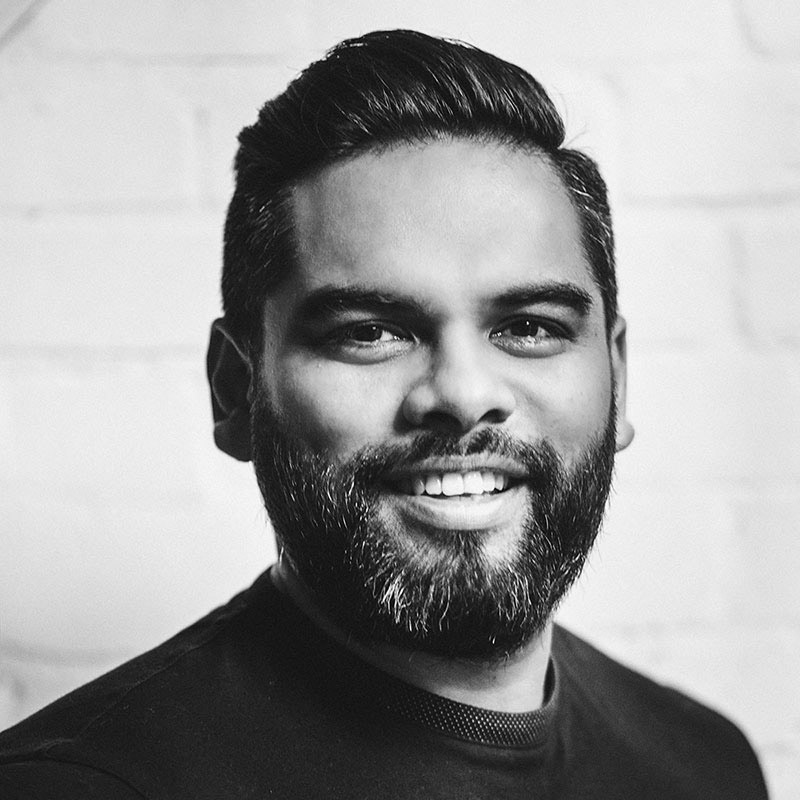
Mick Shah is the founder of MIKI Studios, which he runs with his partner, Ash Davenport. With over a decade’s experience of shooting weddings, both stills and video, the duo are in demand all over the world. See mikistudios.com, Instagram @mikiphotography, Twitter @mikistudios.
As with Tanya, Mick became a wedding photography through a somewhat circuitous route – he started out in the music industry before seeking a job that would give him more family time. As both a wedding photographer and a video maker, he’s a huge fan of the Sony Alpha 7 IV, while also using Sony Alpha 7S III purely for video.
‘The way the wedding market is moving, clients expect both stills and video,’ explains Mick. ‘While the Sony Alpha A1 sits at the top of the tree, it is also quite expensive. The A7 IV is more affordable, while also giving you great options for both stills and video. The quality viewfinder, combined with the insanely good Eye AF, help me to be nimble and discreet and worry about capturing the best scenes, rather than worrying about the camera.’
Mick also appreciates the speed. ‘People say the A7 IV only shoots a bit faster than the A7 III, but with the right card it’s very hard to fill the buffer up. This is very helpful when shooting continuously through a confetti line, for example.’
The camera’s helpful ergonomics appeal, too. ‘There’s a little switch for changing from photo to video to slow motion/quick motion shooting, for example. So I can quickly jump between my custom settings for each. I also love the flip-out screen and the dual card slot. Then it’s got 10-bit 4:2:2 video recording, which is great for colour grading. Other highlights include a new menu system, the focus map feature in video mode in both manual and auto focus, focus breathing compensation and more.’
As for the Sony Alpha 7S III, Mick reckons that it’s probably the perfect video camera for weddings. ‘It’s good enough to shoot most commercial projects until you get to broadcast level. The camera has dual native ISO (for video) with the first base being 640 and the second being 12,800 – meaning it’s cleaner to shoot at 12,800 or even 25,600 than it is at 6400! This all makes shooting in low light easier.’
Mick pairs both cameras with the Sony 35mm f/1.8 and the 50m f/1.2. ‘Between those two lenses I’d say 95% of the day is covered. The 35mm is so light yet incredibly sharp, which again means I can move fast. With the 50mm, I can get beautiful portraits and details. I also have a Sony 20mm f/1.8 for dancefloor shots, when I need to capture more action in the frame. It’s light, but a great performer.’
Lighting and editing
Mick tries to use natural light as much as possible. Every now and then he will supplement this with either off-camera flash or an LED light for speeches, and then on- and off-camera flash for dancefloor shots (he favours Sony flashguns, or Godox models as a cheaper alternative).
‘LED lights are preferred when possible as they are constant, and not as distracting as flash, but flash has more power – so it depends on the situation. LEDs weren’t very good when I started out in weddings, so I tended to go with off-camera flash. But now, for more natural, documentary style shoots, they are a great-value option. At a wedding, people’s eyes quickly adapt to an LED light being on, while off-camera flash can be distracting.’
For editing his stills, Mick culls images in Lightroom and then edits with customised presets. ‘I then take some images into Photoshop, for removing unwanted signs, for example.’
Mick’s top tips
- Practice, practice and practice. You need to shoot every day. Remember the old adage that it takes 10,000 hours to get good at something, and it’s the same if you are honing video skills. I used to practise by filming lots of family events, for example.
- You also need to know the particular characteristics of your gear. Study all aspects of the AF system and low-light performance in particular.
- Look after your gear. Have a routine for packing down so you know where everything goes. You don’t want to panic on the actual wedding day.
More kit for wedding photography
Cameras
The choice of camera can be a contentious one for wedding photographers. There’s lots to bear in mind including how heavy the camera is, the lenses which are available for it, how sturdy the camera is, and the kind of photography you’ll be doing as part of your wedding photography style.
Most tend to find that a full-frame camera is the best option for wedding photography as full-frame sensors can cope well with low light, tend to have the most detail, and create beautiful shallow depth of field effects.
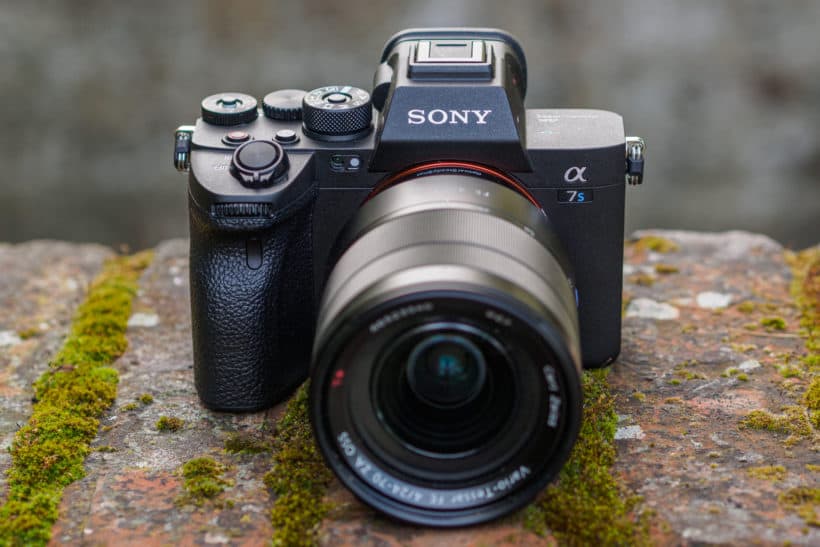
Time was that a full-frame camera left you with one option: DSLR. However, with the availability of full-frame mirrorless cameras, all that has changed. The benefits of the Sony system is that its light (which is great for carrying all day), and you can shoot silently (ideal when in quiet churches and for not ruining the atmosphere). The Sony A7S III is also famed for its lowlight capabilities.
The lens ranges for Canon and Nikon DSLR systems are far greater, so many will probably stick with these options. You have a good range of choices for full-frame Canon and Nikon DSLRs, including the Nikon D850, Nikon D6, Canon EOS 1DX Mark III and Canon EOS 5D Mark IV. Plus, mirrorless options include the Nikon Z7 II and Canon EOS R5 or R6. You could also consider the Canon EOS 7D II and Nikon D780, or second-hand options 7D and D700.

Most wedding photographers will also have a second camera in their arsenal. This means they don’t need to swap lenses all the time, and you can rely on one if the other fails for whatever reason. Some people stick with two of the same model, while others will have one camera which is cheaper than the other to cut down on costs. You can also consider buying second-hand, see the best second-hand full-frame mirrorless cameras here.
Lenses
Because you’re likely to be shooting a fairly wide range of subjects, you’re going to need a seriously diverse range of glass.
Top of the list will probably be a full complement of prime lenses. 35mm and 50mm are great lengths for “documentary” style shots, while an 85mm lens is a classic portrait focal length.
You may also want to consider a 24-70mm f/2.8 zoom lens which will give you a good range of focal lengths without the need to swap lenses. The maximum aperture is not quite as wide as prime lenses can offer though.

Next up, telephoto lenses for when you can’t get close to the action, such as during the ceremony. A 70-200mm lens is a classic choice for many wedding photographers, but you may also want to consider going a little longer if you can. These are great lenses to consider: Sony FE 70-200mm f2.8 GM OSS II, Canon EF 70-200mm f/2.8L IS II USM, Sigma 70-200mm f/2.8 DG OS HSM Sport
Other speciality lenses which can be useful for wedding photographers include a macro lens for details such as wedding rings and flowers, a tilt-shift lens for interesting portraits, and a very wide angle lens for capturing venue interiors and for very large group portraits.
Check out the best lenses for portrait photography
Camera bags and straps
Many wedding photographers may equip themselves with two different camera bags which are useful at different points throughout the day.
You may want to use a backpack type bag which holds all of your gear – just make sure there’s somewhere suitable at the venue that you can securely leave your gear when you’re not working with it. However, a rolling camera bag will offer good protection while letting you drag your kit to where you need it, rather than carrying it on your shoulders, the 42T, 59T and 55BT from the Vanguard Veo Select range are great examples that can hold multiple cameras and up to eight to ten lenses, plus a laptop or tablet.
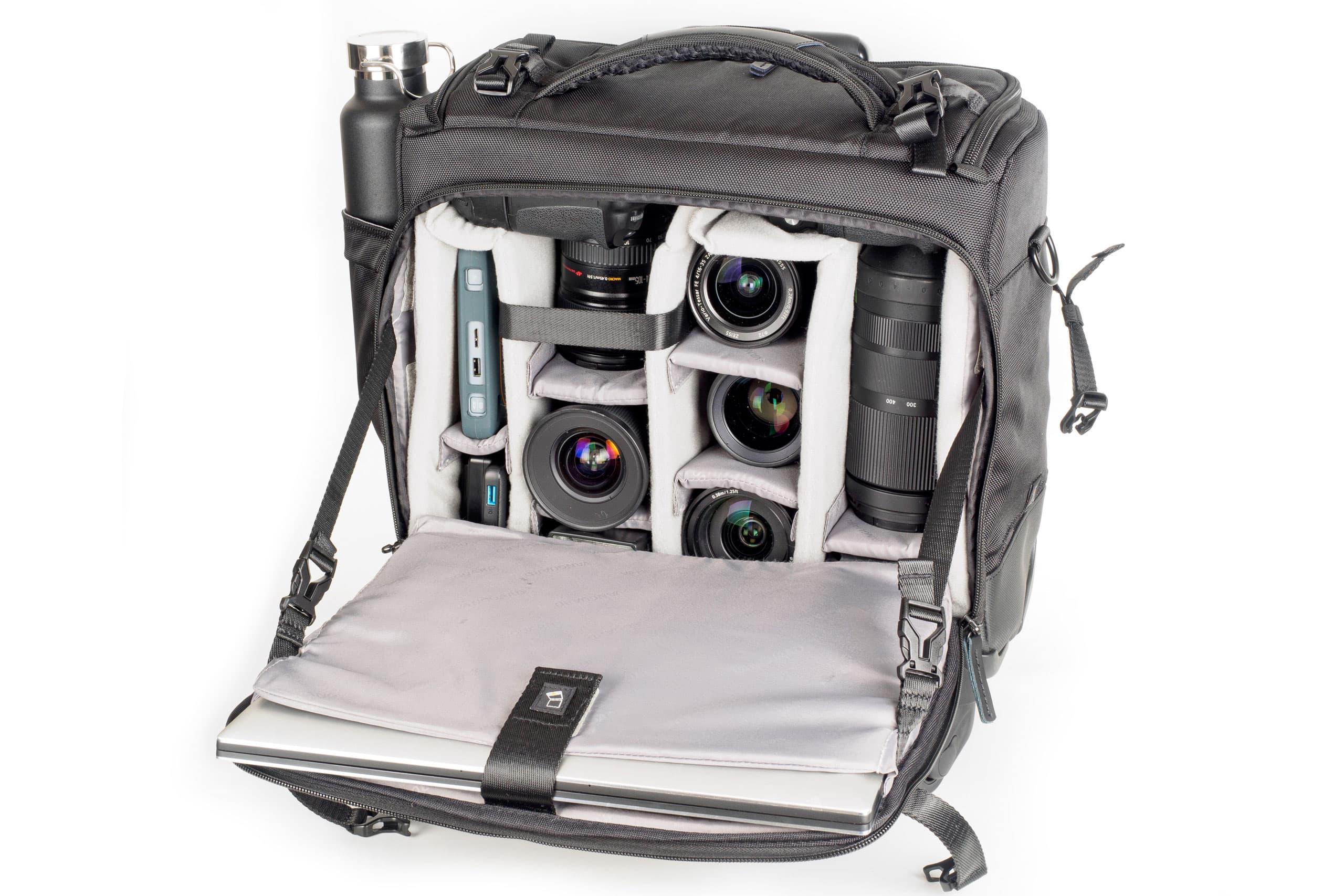
The Vanguard Veo Select 42T will accommodate a decent quantity of kit, including two cameras and long telephoto lenses
Another example is the Lowepro PhotoStream RL 150. Which features an armoured exterior and a flexible interior to protect your valuable gear in transit. Its streamlined design makes it carry-on compatible and it’s large enough to accommodate one or two DSLRs with a 70-200mm f/2.8 attached, plus up to eight additional lenses. A tripod can also be strapped on the side. The construction and materials are second to none, so it should survive many years of heavy use.
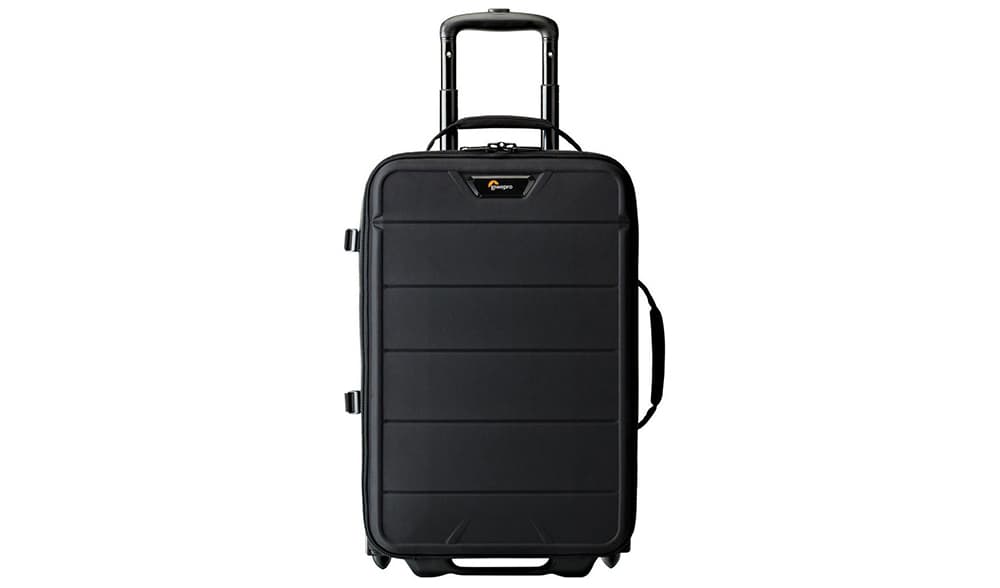
A messenger style bag is great for walking around the ceremony and you need to quickly access a couple of different lenses or other accessories. A strap which allows you to carry two camera bodies can be a great investment too, see our selection of the best harnesses and straps for wedding photographers.
Tripods
A tripod won’t be necessary for many types of wedding photography shot, but they can be useful for certain shots, such as posed group shots. Placing the camera on a tripod and arranging various groups can be a quicker way to work than handheld. The 3 Legged Thing Equinox Albert is ultra-tall, which can be useful for large group shots. Also think about stands if you’re going to be using off camera flashes, diffuses, and lights.
Flashes and other lighting equipment

At least one flash is almost essential for wedding photography – especially when it comes to the end of the day and it’s time for first dances and night-time shots. A flash can also be useful for dark ceremony shots (although you’ll need to check with whoever is holding the ceremony that flash is acceptable).
You might also want to equip yourself with external lights, diffusers to soften the light if you can’t bounce it from a wall, and remote triggers if you’re using off camera or more than one flash.
The Hahnel Modus 360RT is a good example for small mirrorless cameras. It’s a compact, lightweight flash that is powered by a dedicated Li-ion battery rather than AA cells, which packs in more energy. As a result, it promises more flashes per charge than its competitors, along with quicker recycling times of just 1.5sec.

Reflector
A reflector is a simple piece of kit than can save lots of subjects. They’re useful when photographing wedding portraits, or for photographing still life shots of things like wedding rings, flowers, clothing and so on.
Ideally you’ll want to look for a 5-in-1 reflector which features a gold side, a white side, a silver side, a black side, and a diffuser to equip you for various lighting conditions and situations. Something like the Lastolite Circular Bottletop Reflector is ideal for this kind of thing.
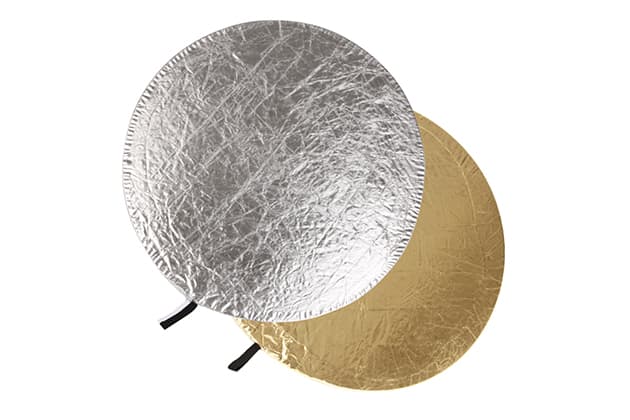
The Lastolite Circular Bottletop Reflector kit comes with two reversible covers and the main body of the reflector is translucent. The idea of the translucent part is that it lets a lot of light through, giving photographers the ability to diffuse harsh sunlight. The covers boast four different coatings to allow photographers to manipulate the light in different ways. The kit is available in 50cm, 75cm, 95cm and 120cm versions.
Read our Lastolite Circular Bottletop Reflector 120cm kit review
Batteries

You can never have too many spare batteries when it comes to a wedding. It’s likely you’ll be photographing all day, and quite intensely too. Make sure you pack at least two spare batteries for each camera. It might be worth carrying the charger with you too so you can find somewhere in the venue to charge any flat batteries. Remember to also pack spare batteries for any accessories, such as flashguns, that you’ll be using.
The secret to long battery life – Top 15 Tips!
Memory cards

As well as spare batteries, spare memory cards are also essential purchases for wedding photographers. Ideally your camera will have two memory card slots. You can use the second slot to make a backup of the first memory card to guard against memory card failures and corruptions. Make sure you have at least three spare memory cards, and ideally you’ll want to buy high capacity cards.
Take a look at our ultimate guide to memory cards to find out how to select the right one for your camera.
As you’re going through the day, backing up your card using a back-up device (or your laptop) is also highly recommended if you can. The WD My Passport Wireless Pro is a good example of something you can easily fit in your camera bag for backing-up on the move. This handy device lets you back up your pictures from your camera to its robust internal solid-state drive without the need for a computer and is available in capacities from 250GB to 2TB for £220-£760.
It has both a built-in SD card reader and a USB 2.0 port that allows backup of other card types using plug-in readers. Its rechargeable battery will last for hours and can even be used as a powerbank to top up other devices. You can never have too many backups when it comes to wedding photography.
See more options here: Best portable hard drives for photographers

See more essential camera accessories here.
Considering also shooting some video at weddings? Check out our guides to capturing video and the essential equipment you need.
Further reading:
10 shots you must get at weddings!
Read our Complete Guide to Wedding Photography

